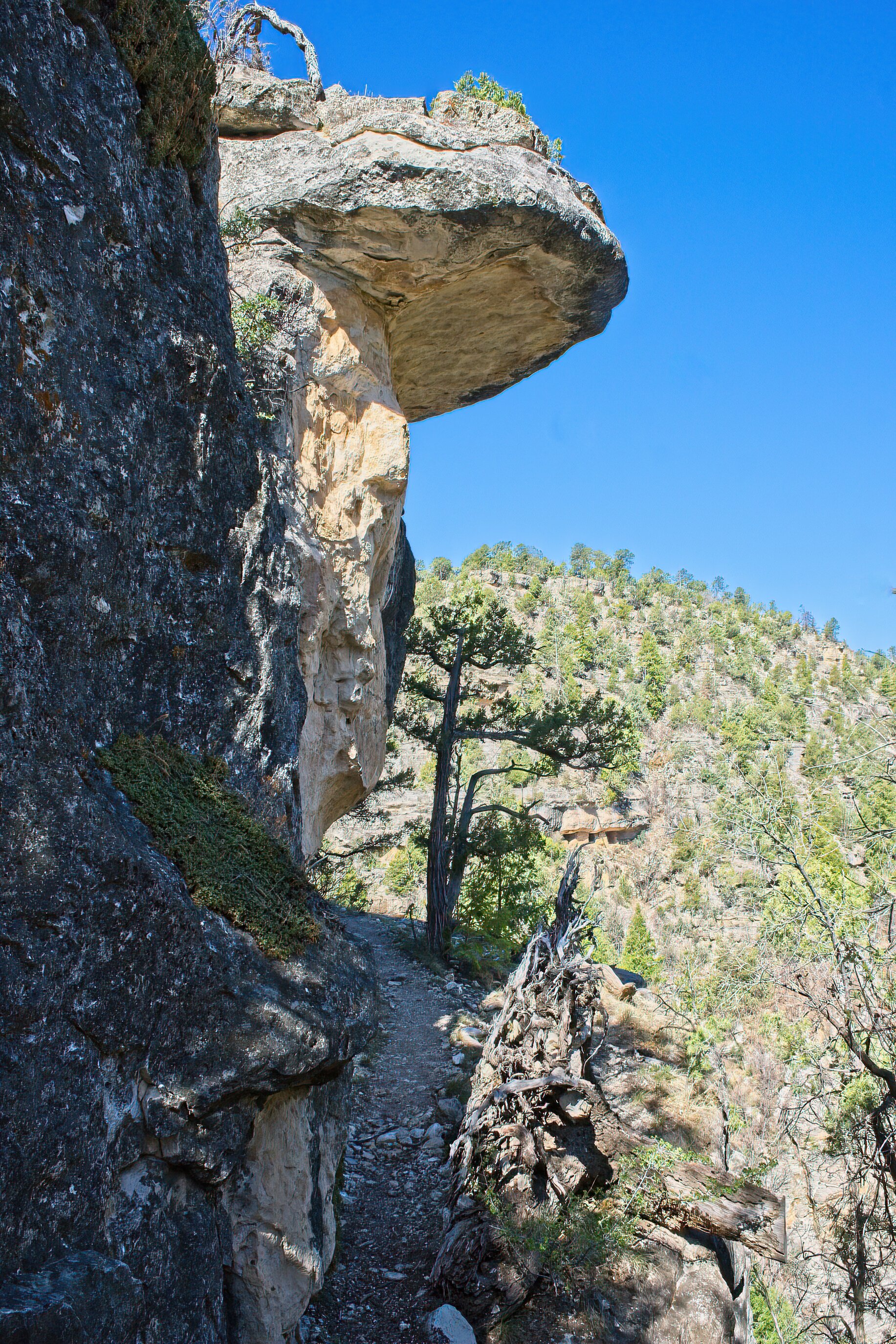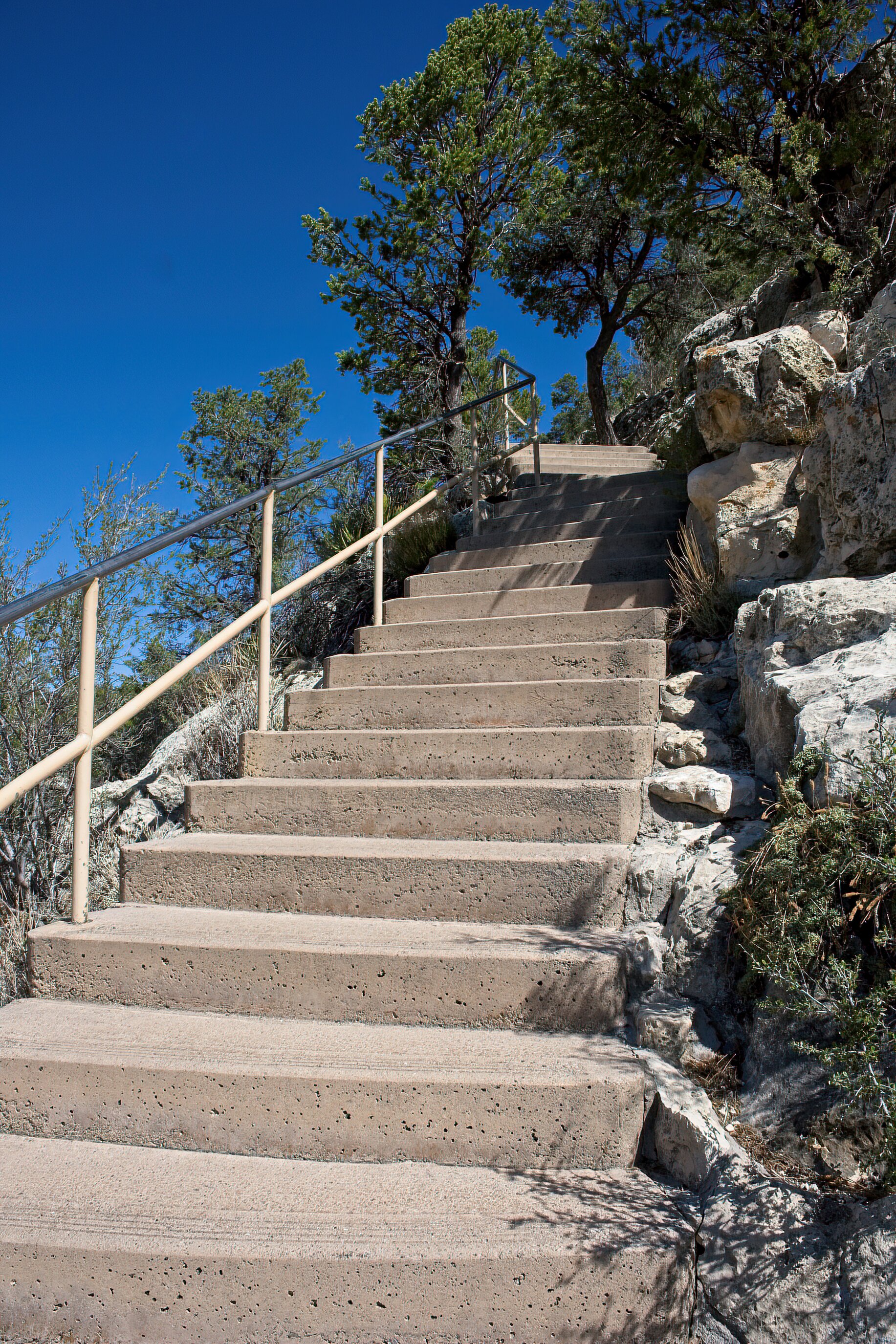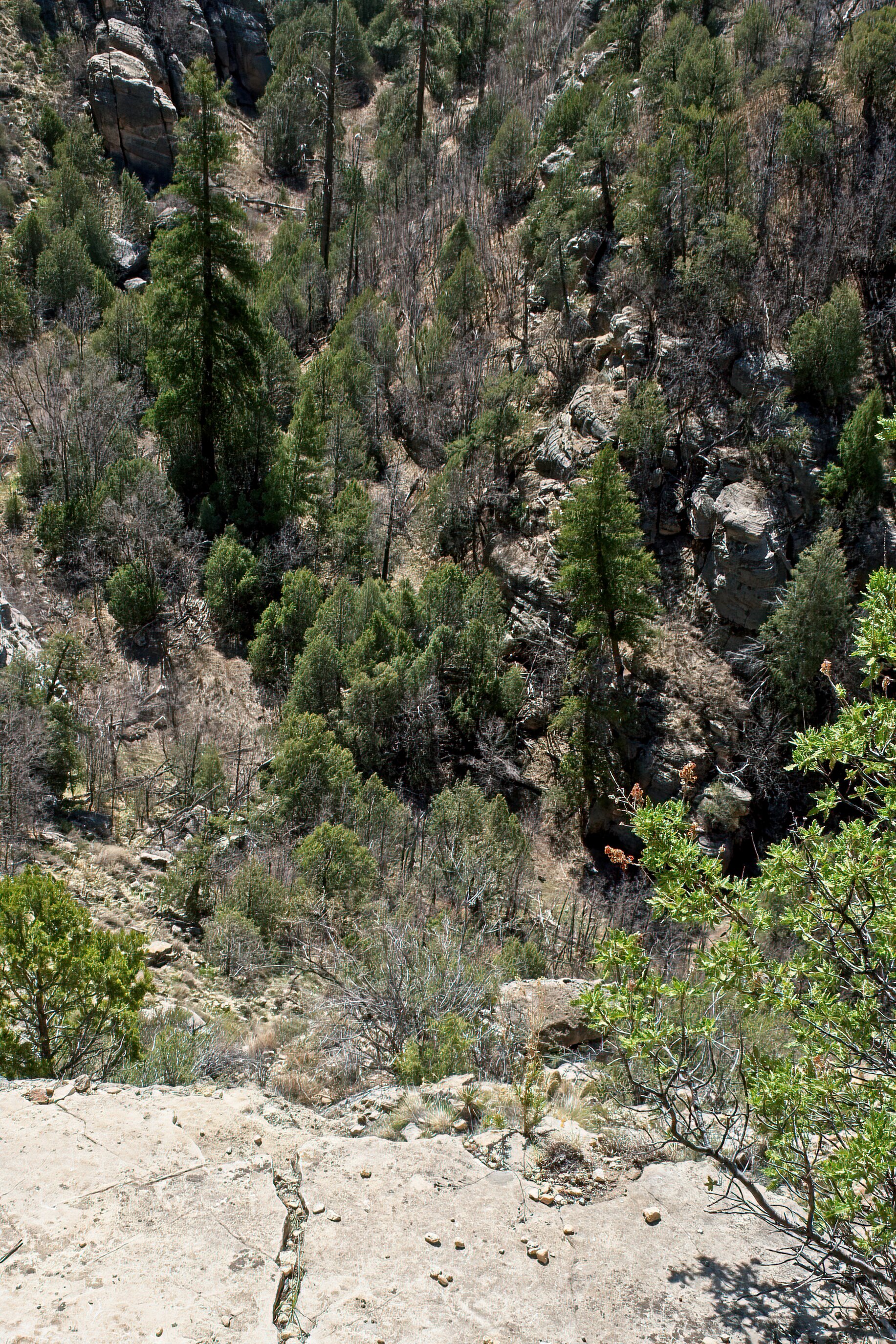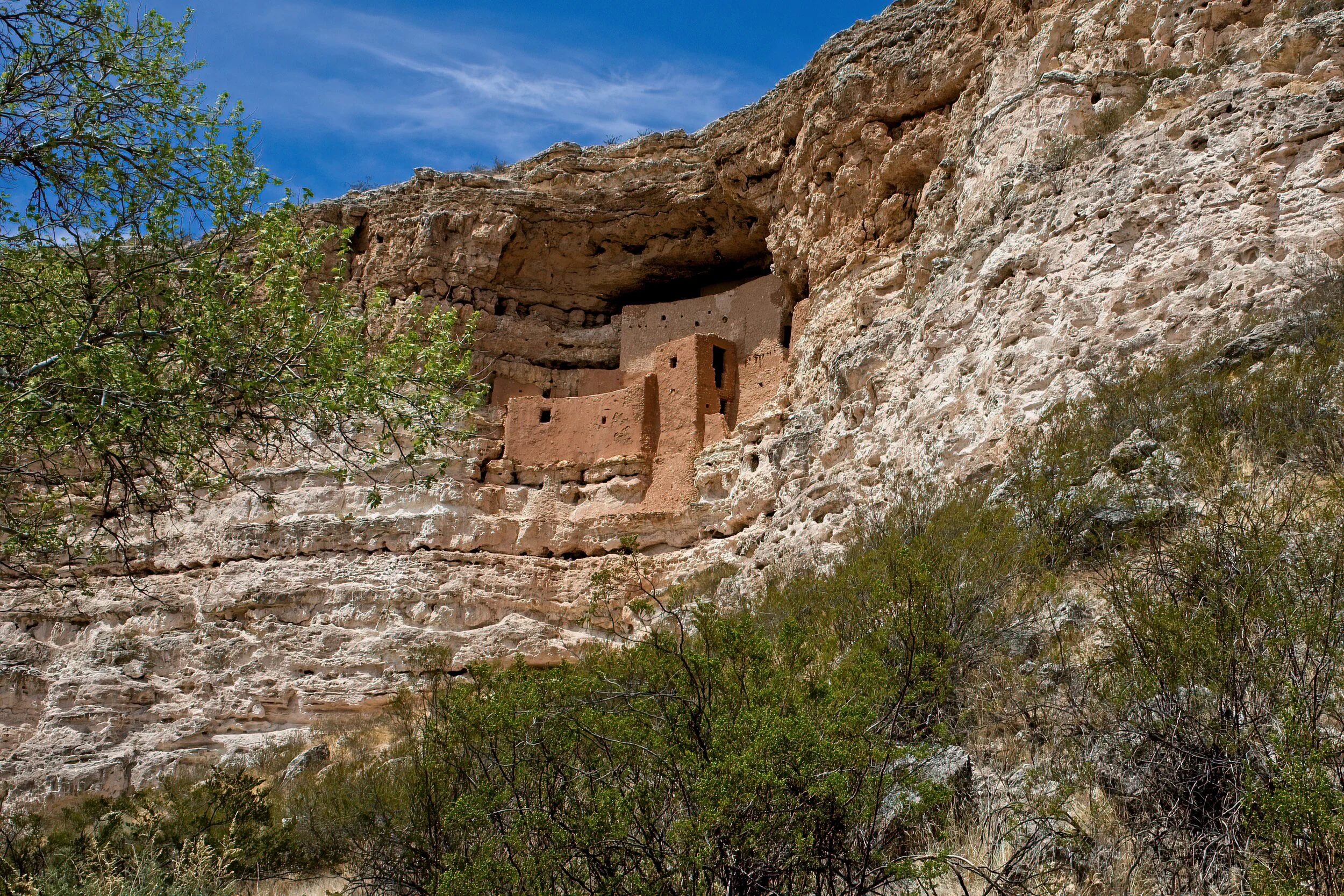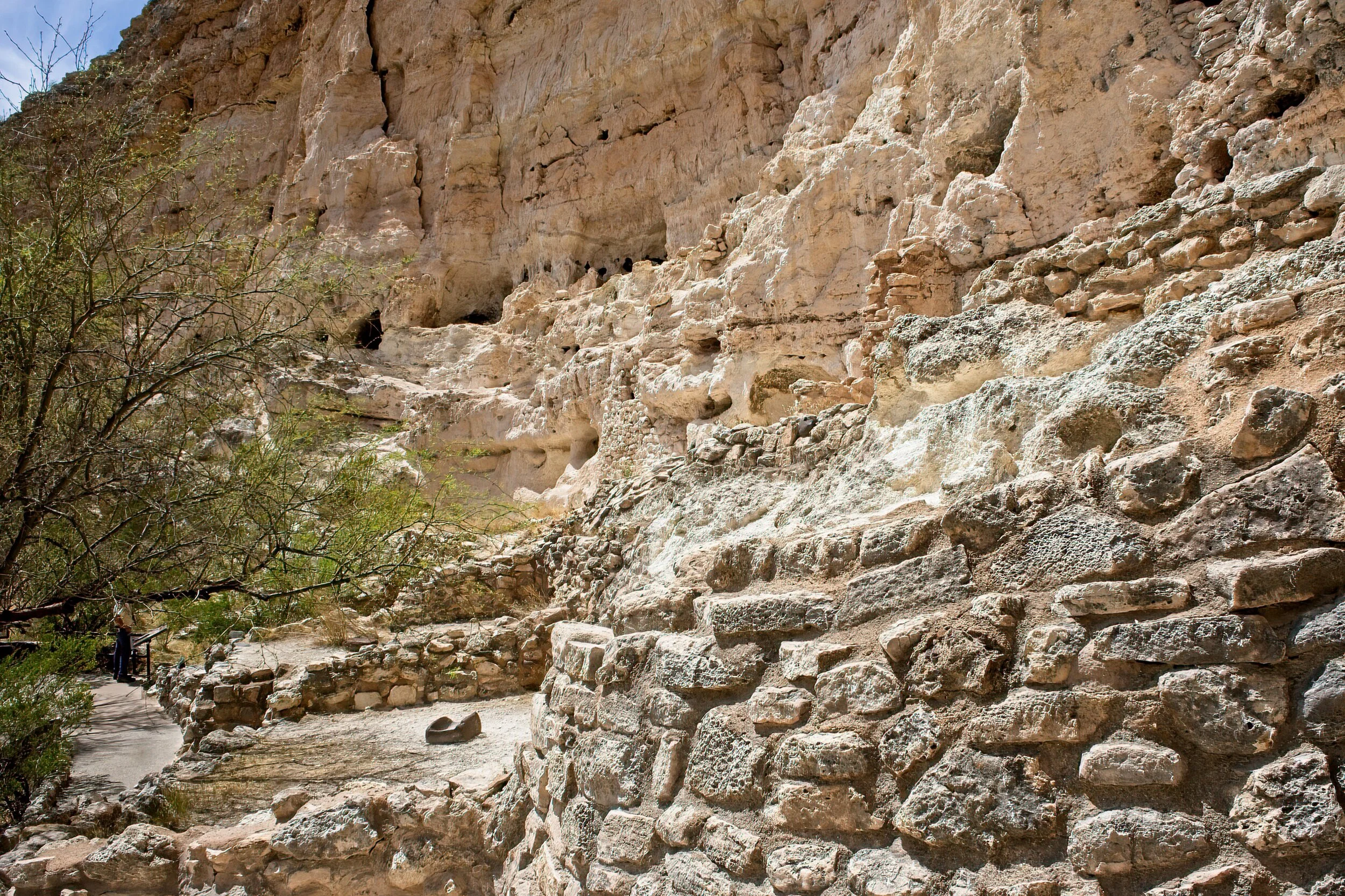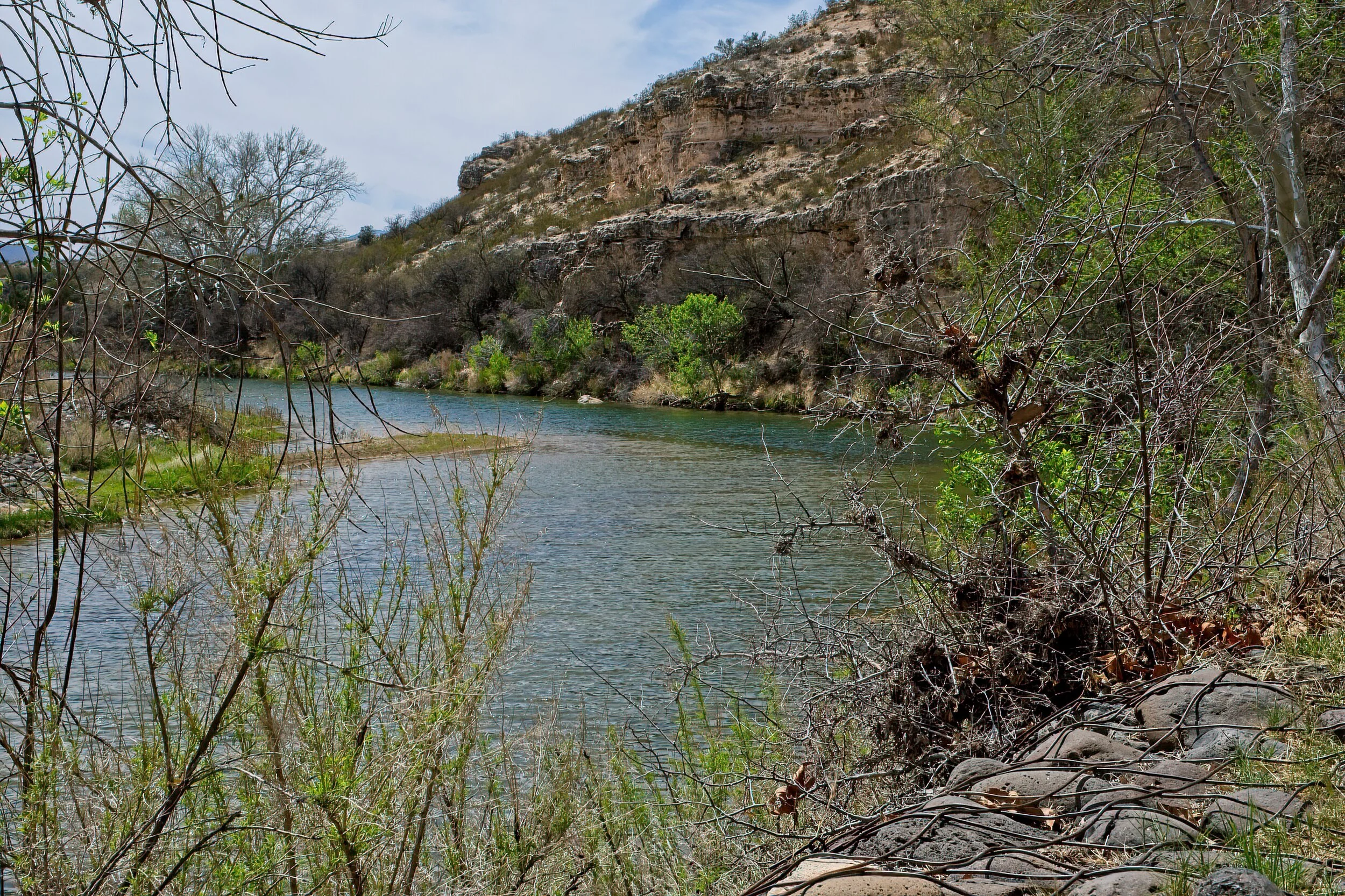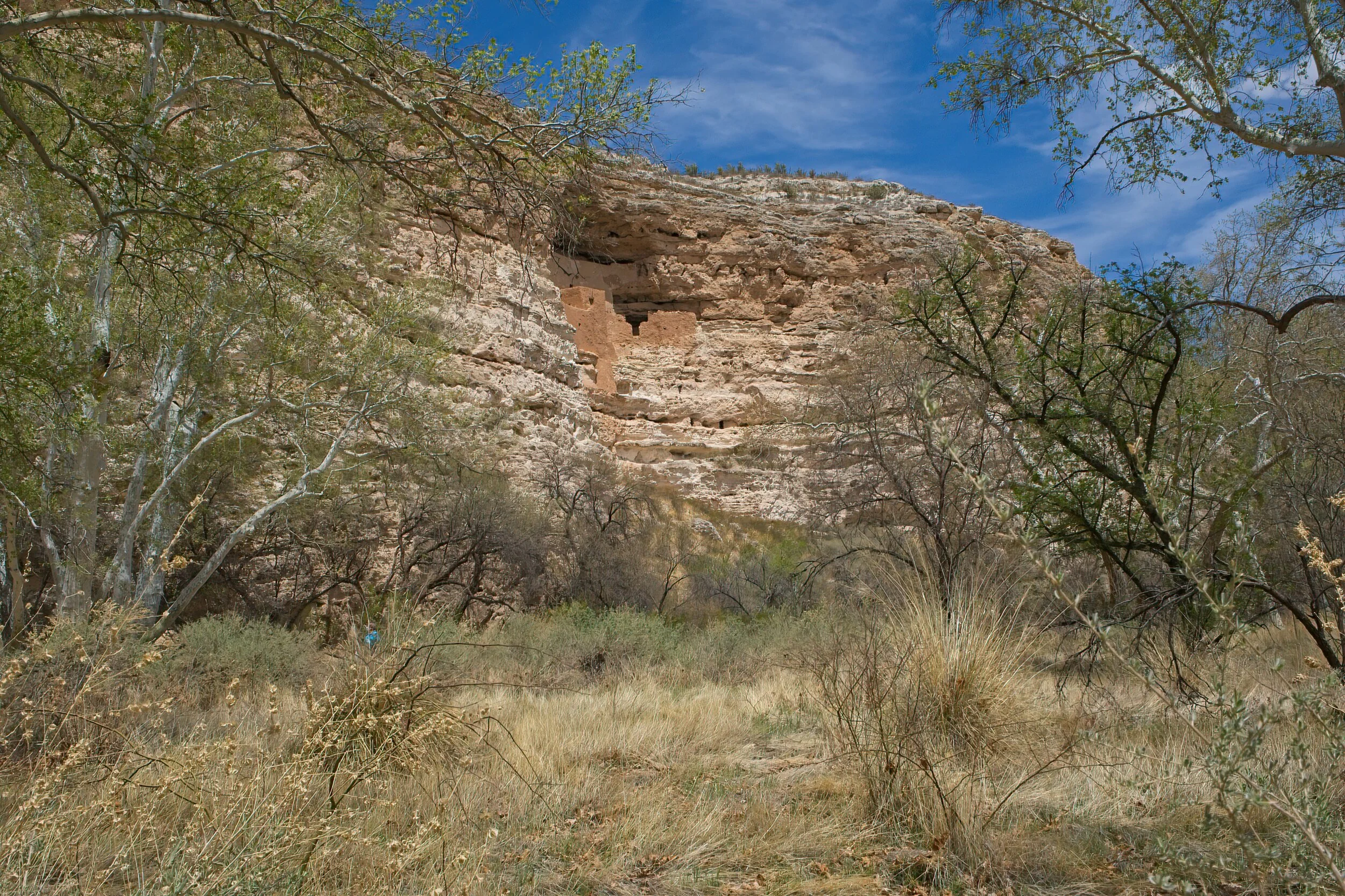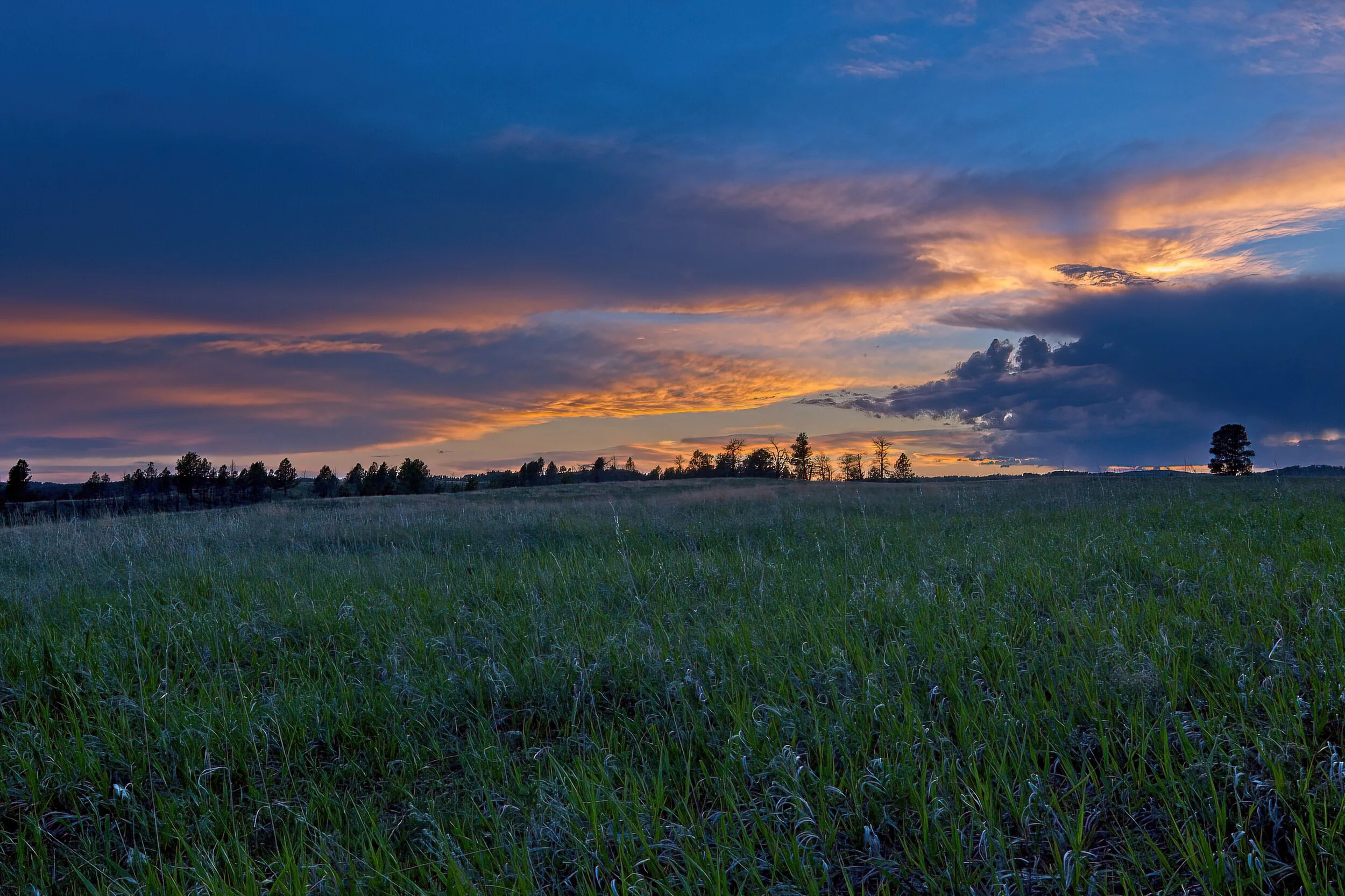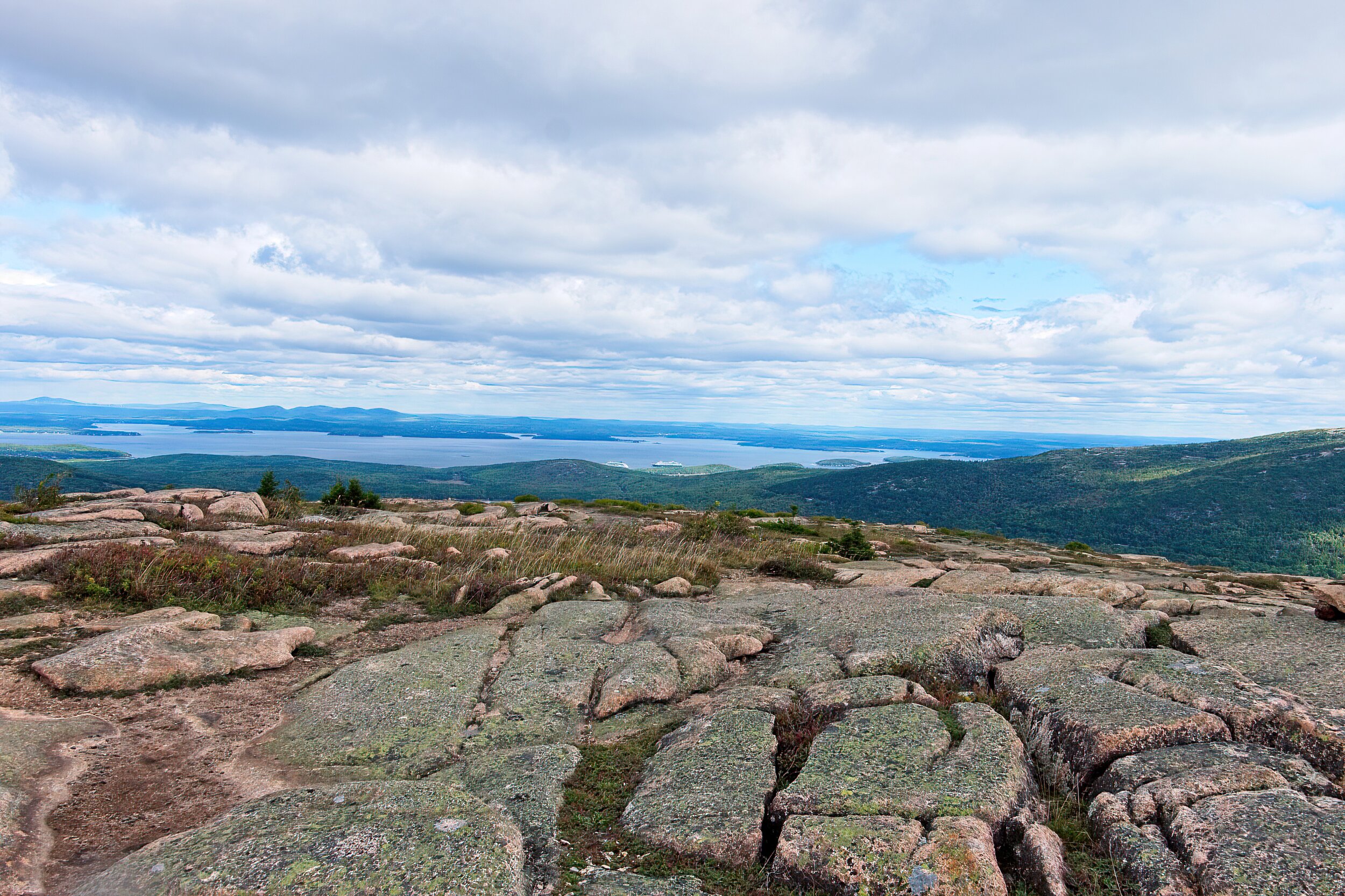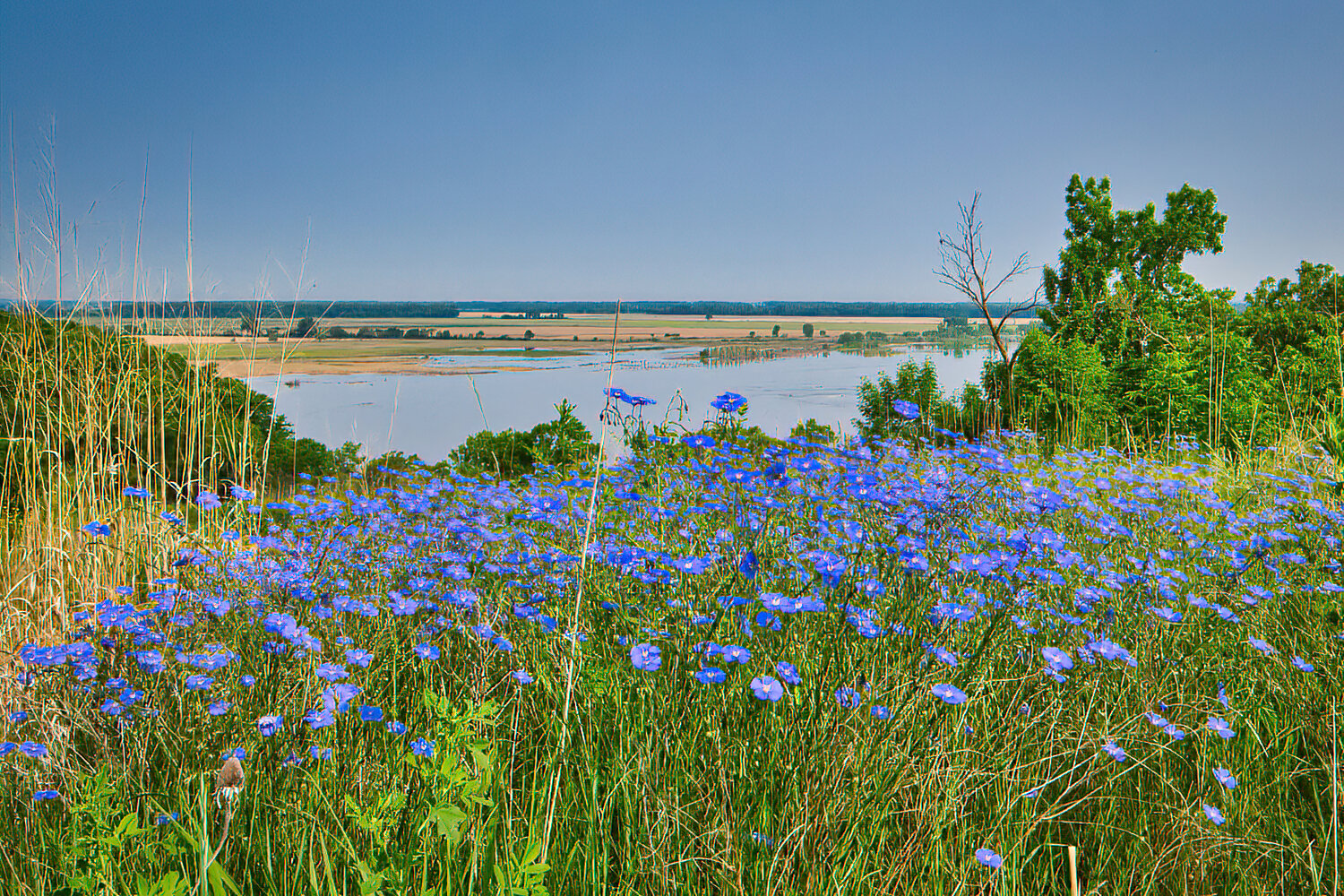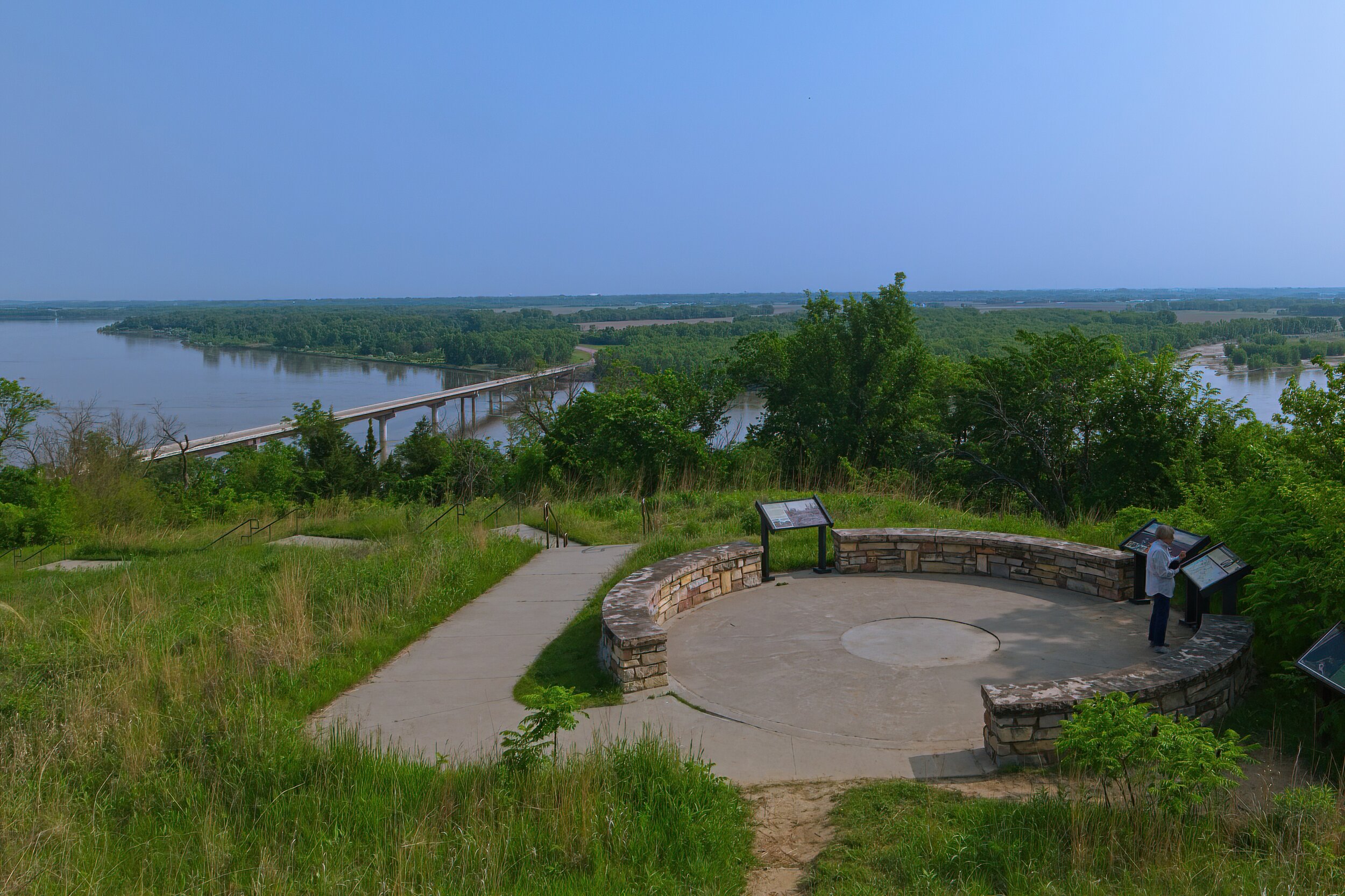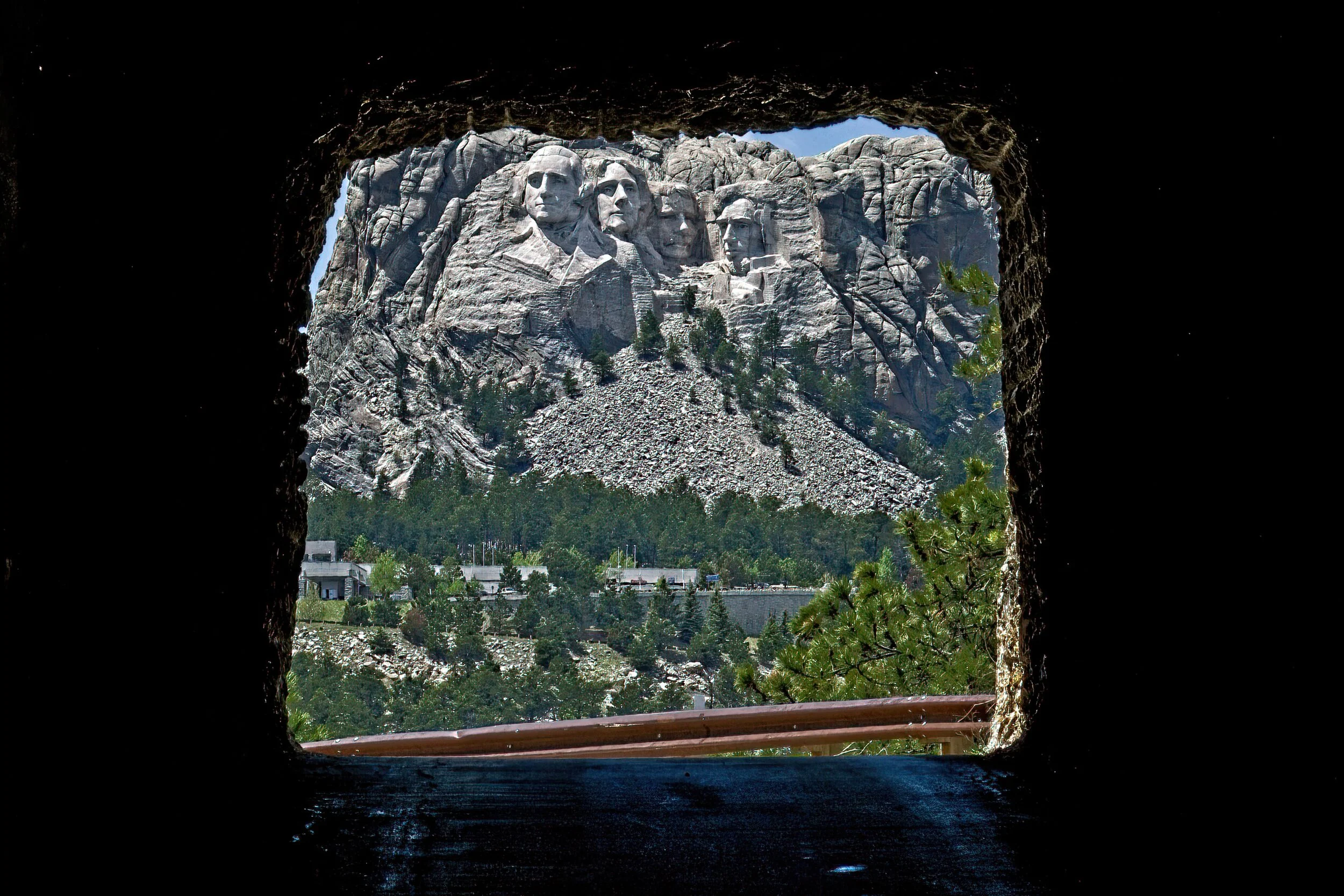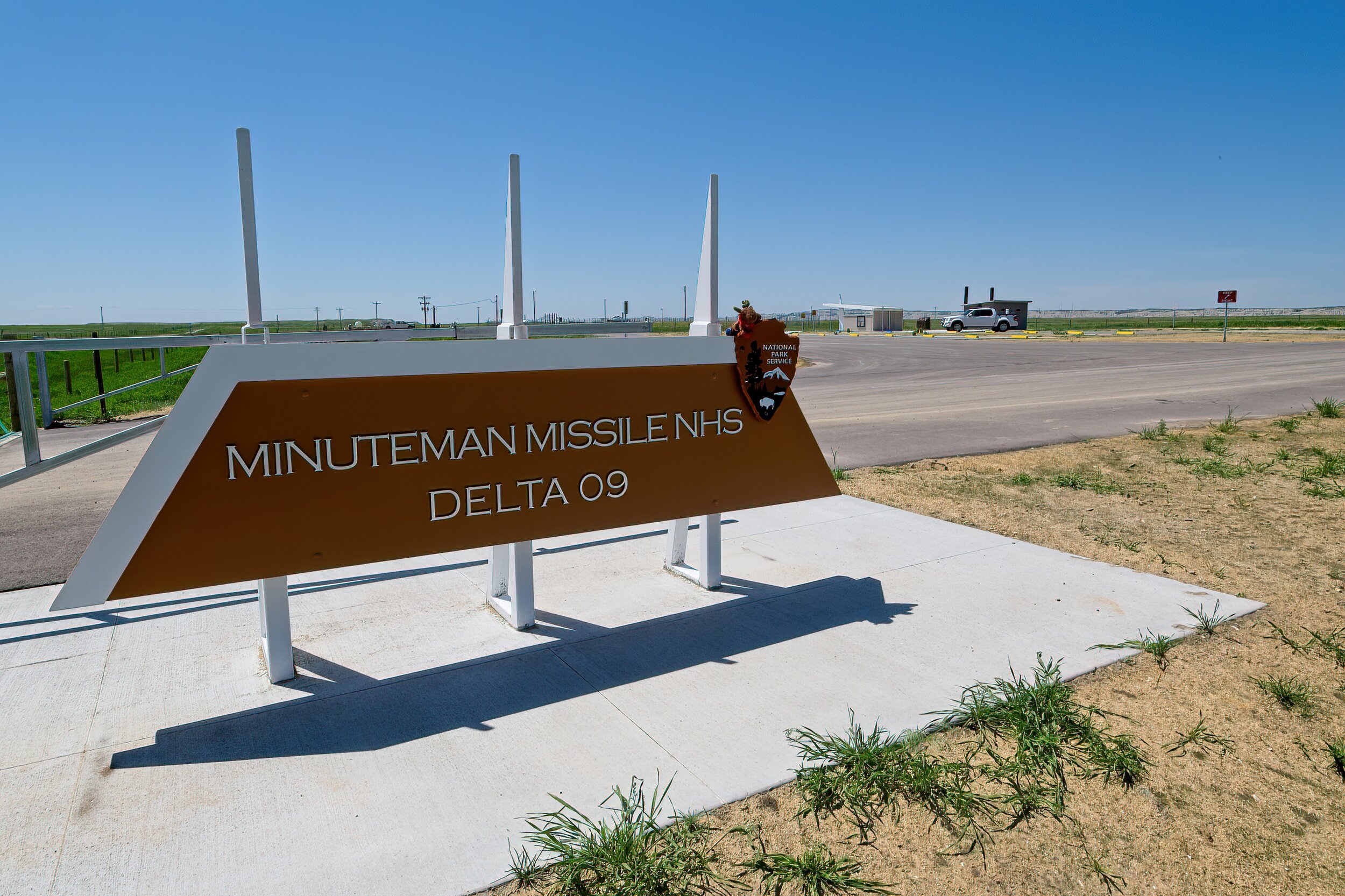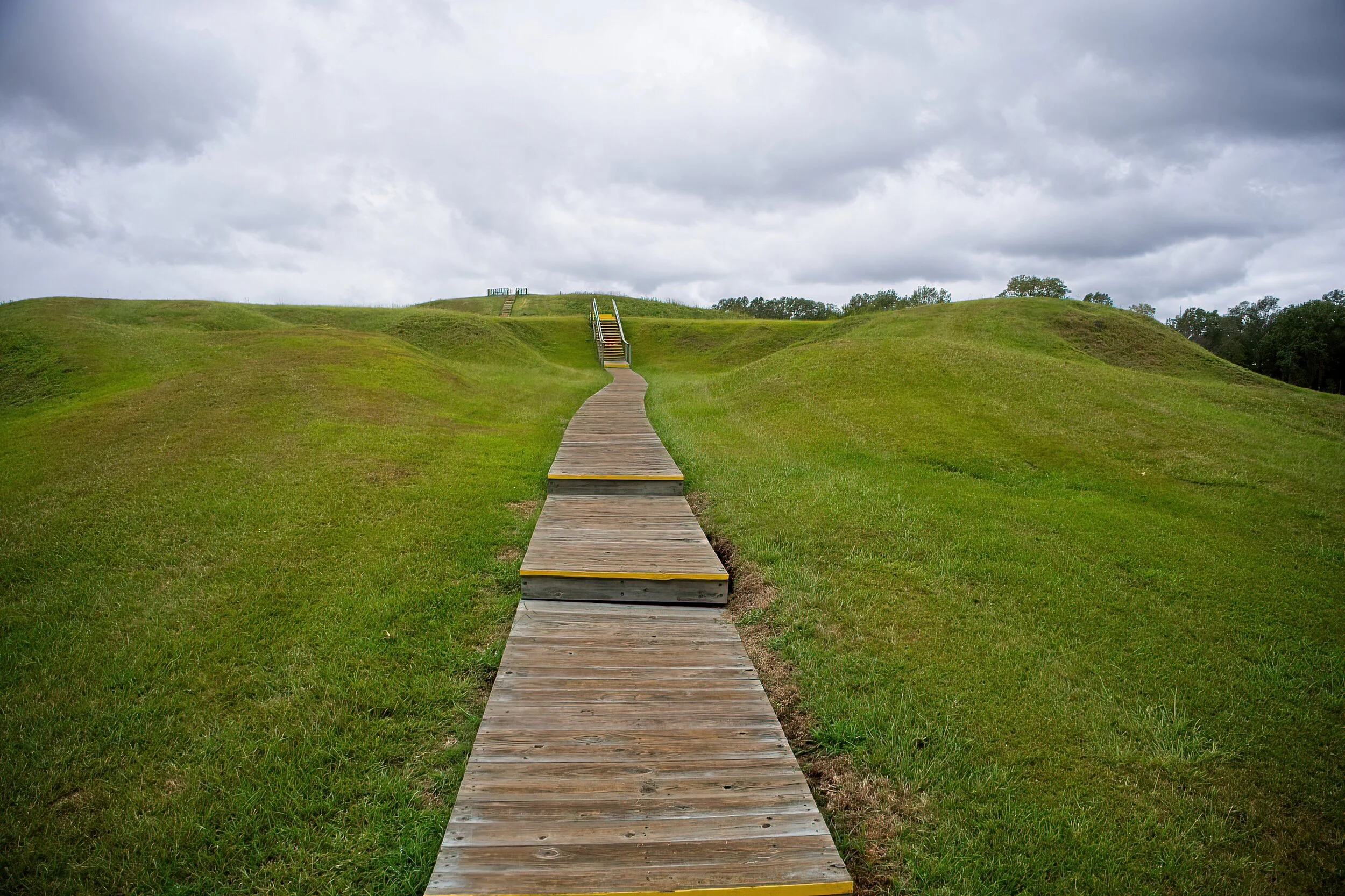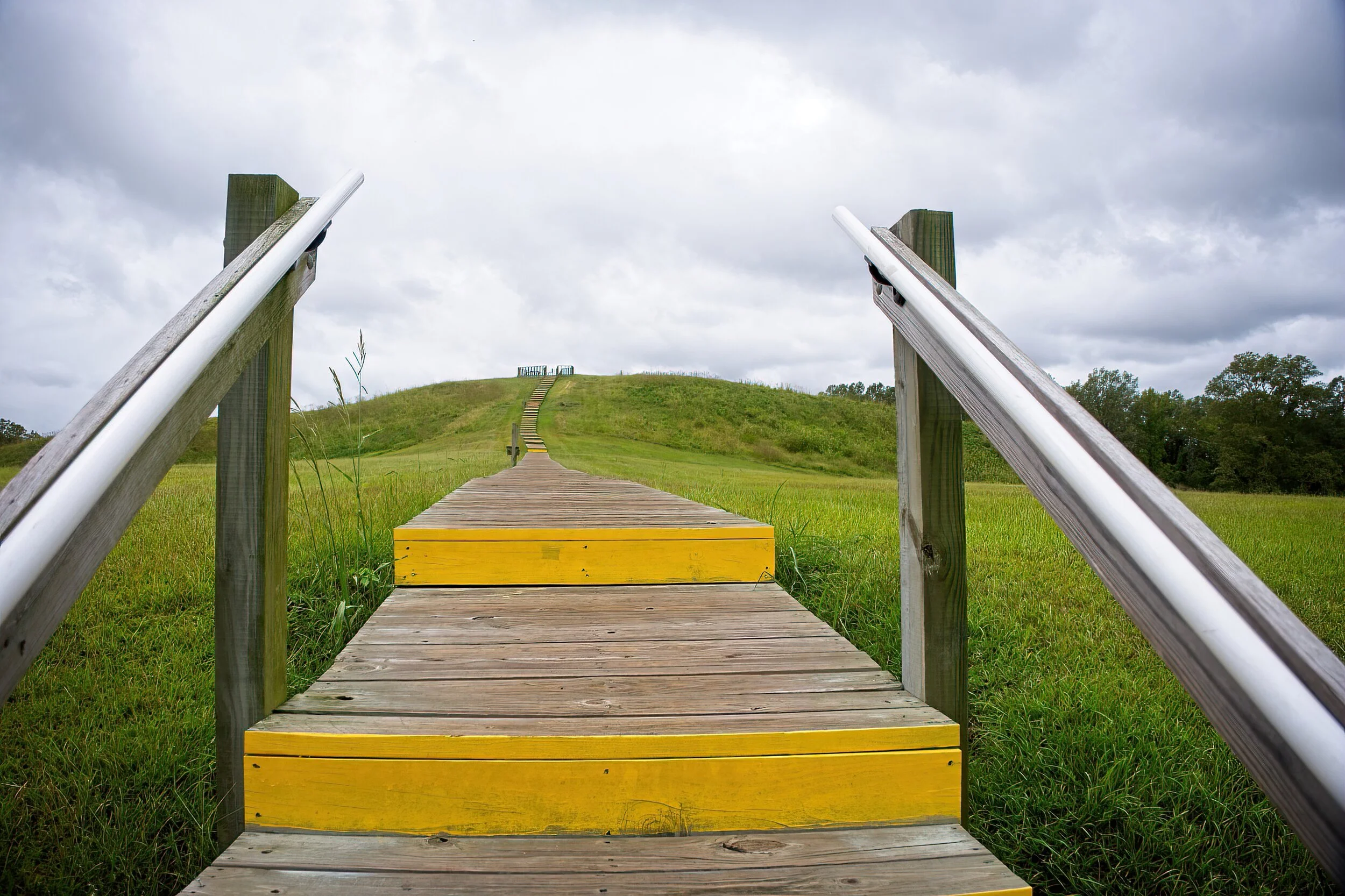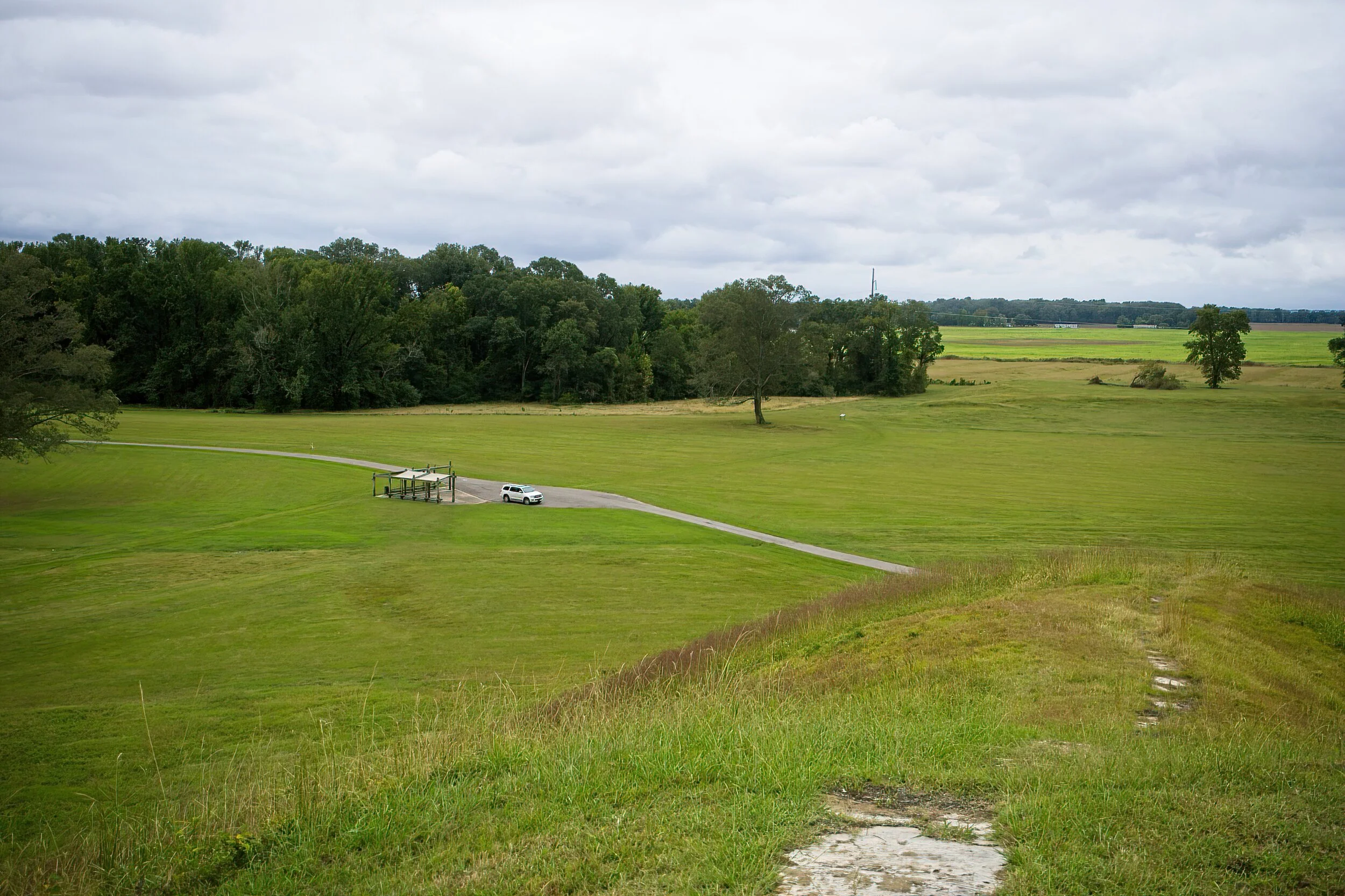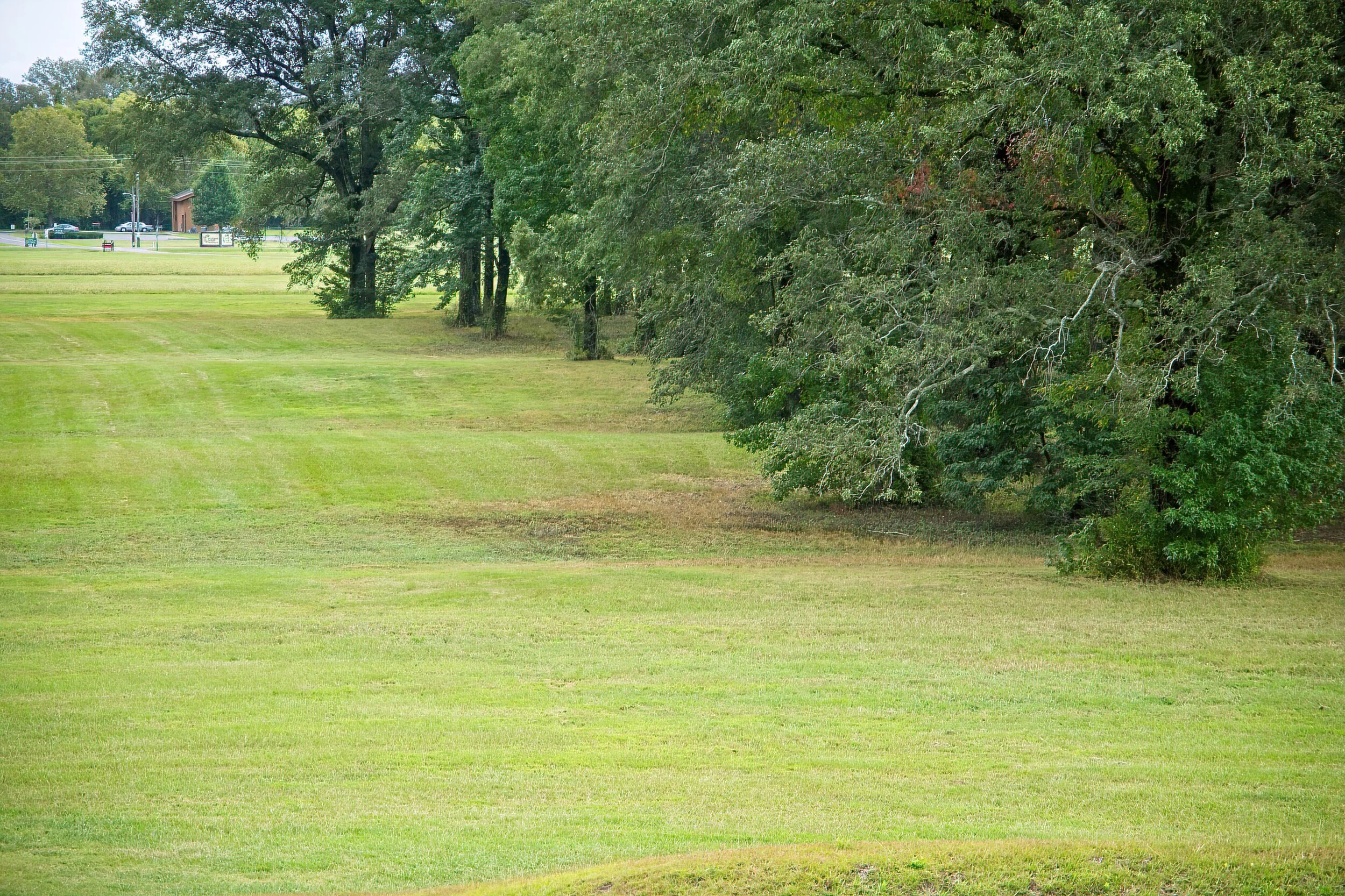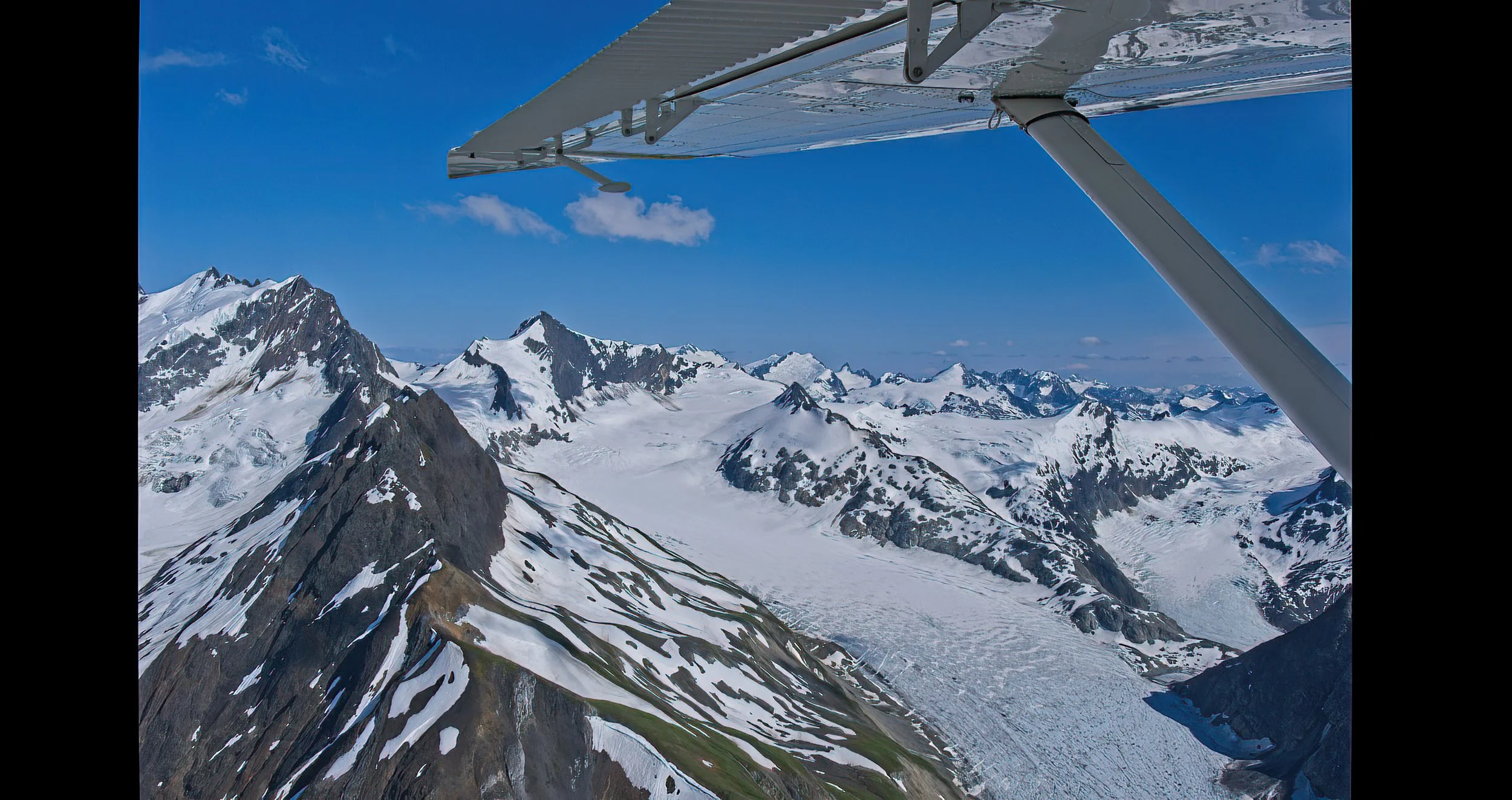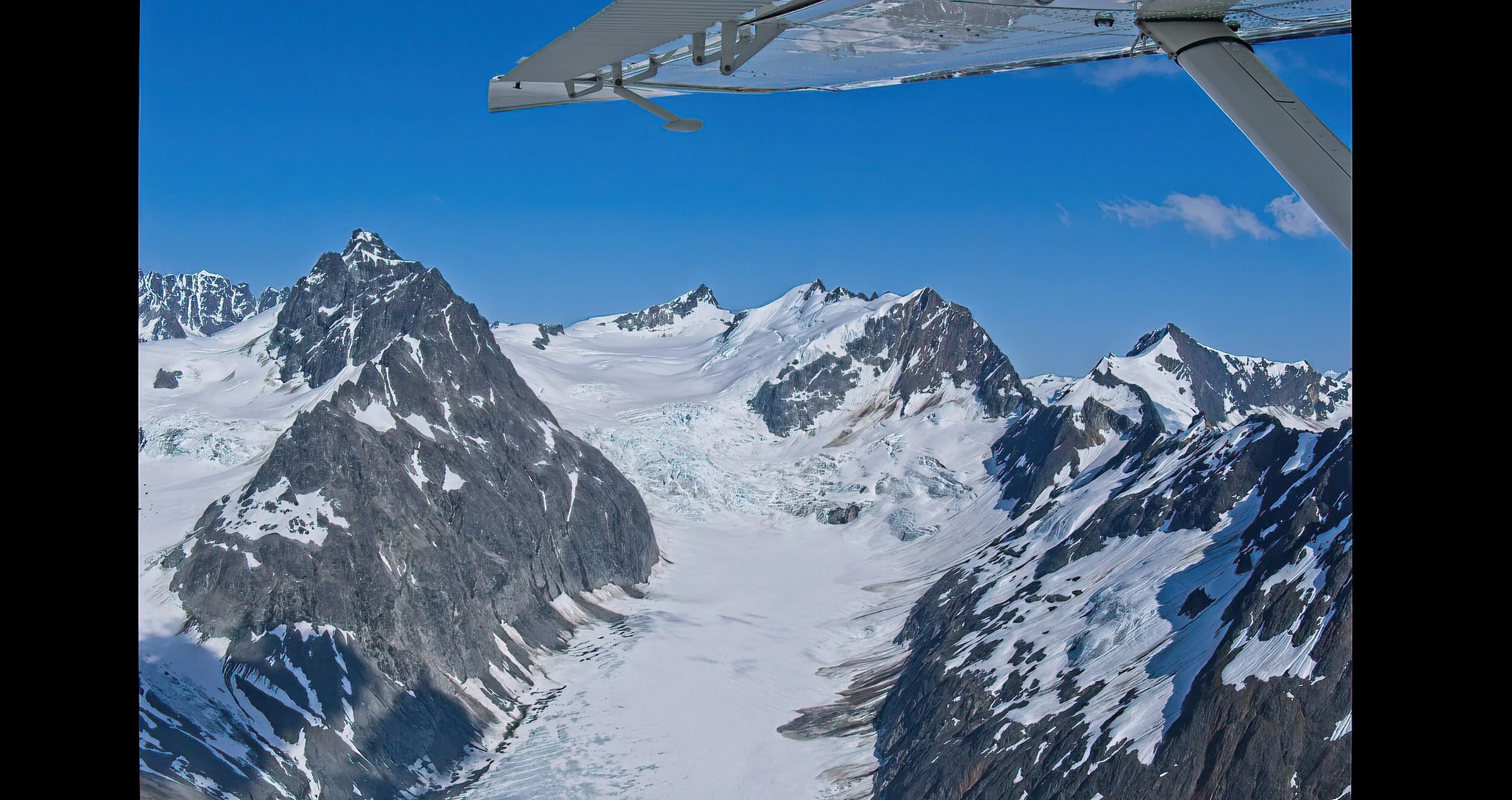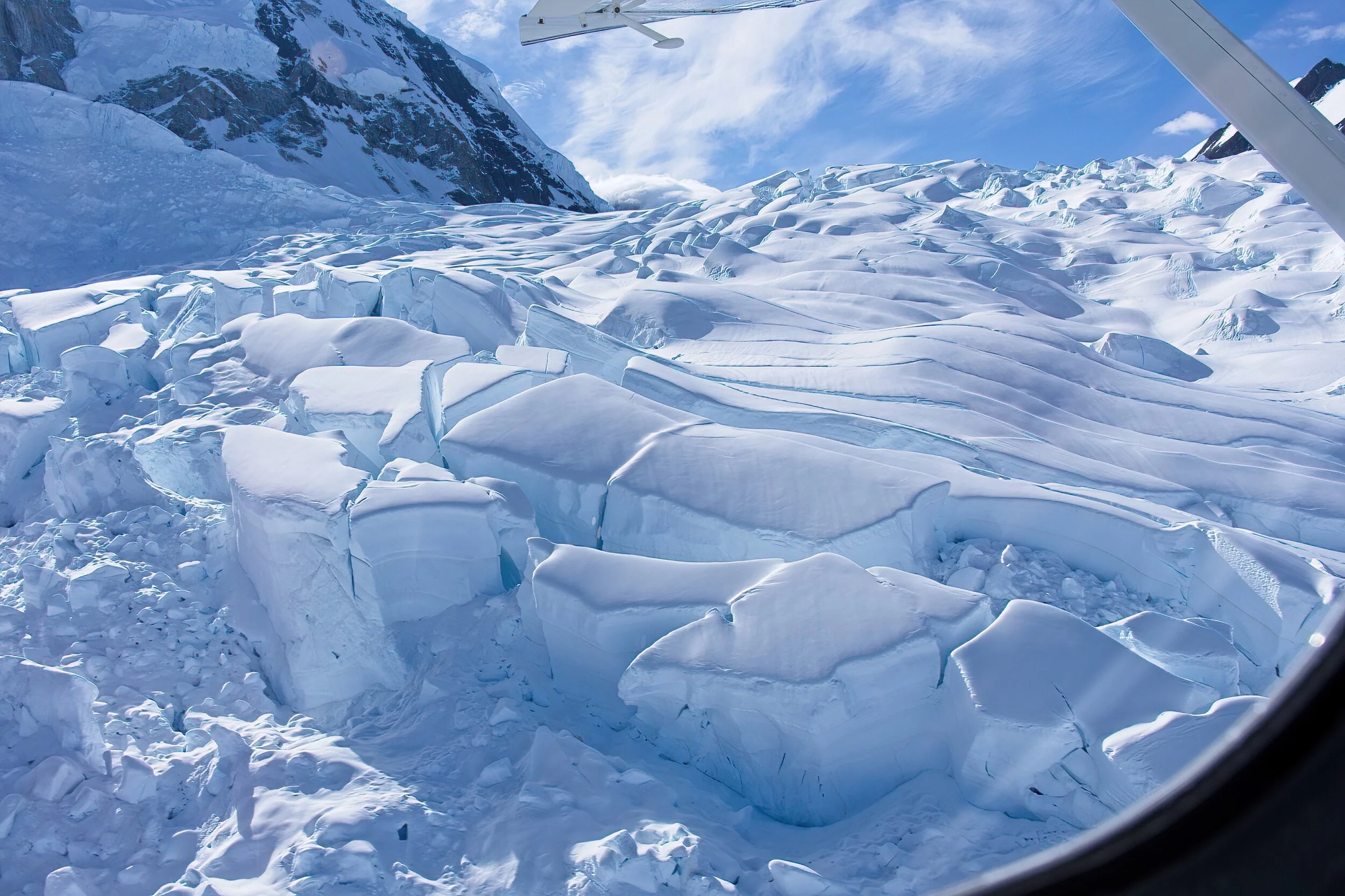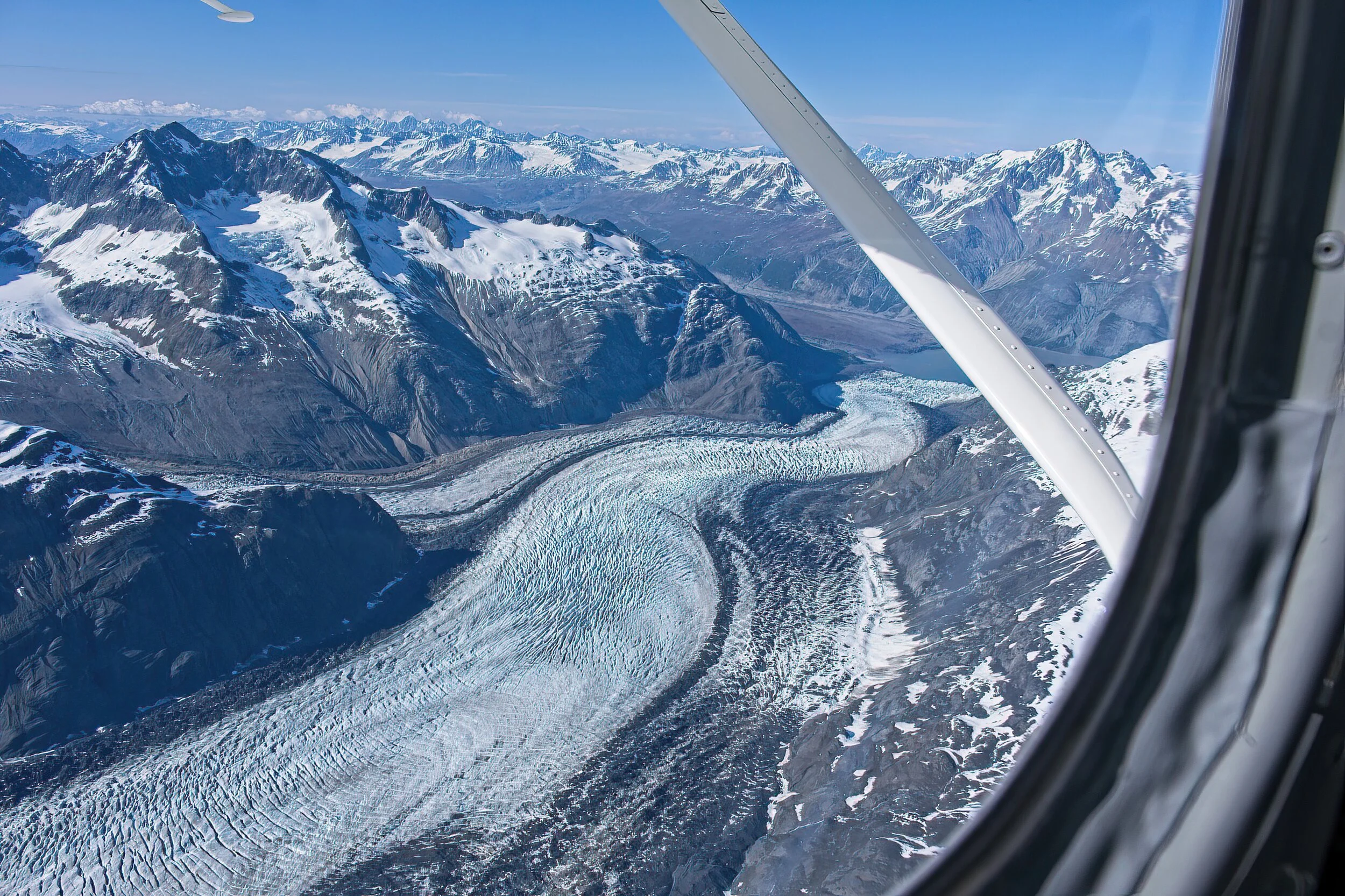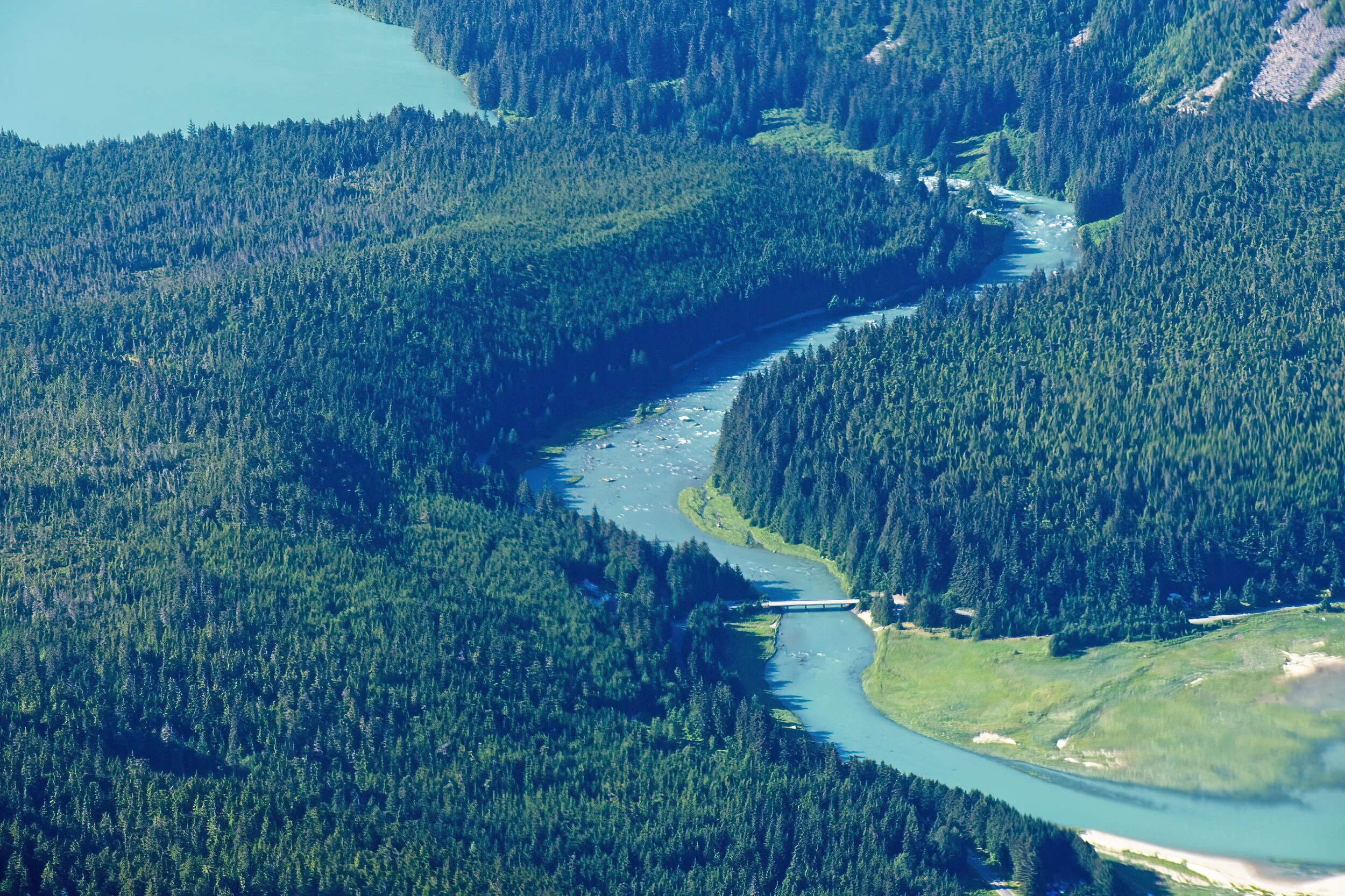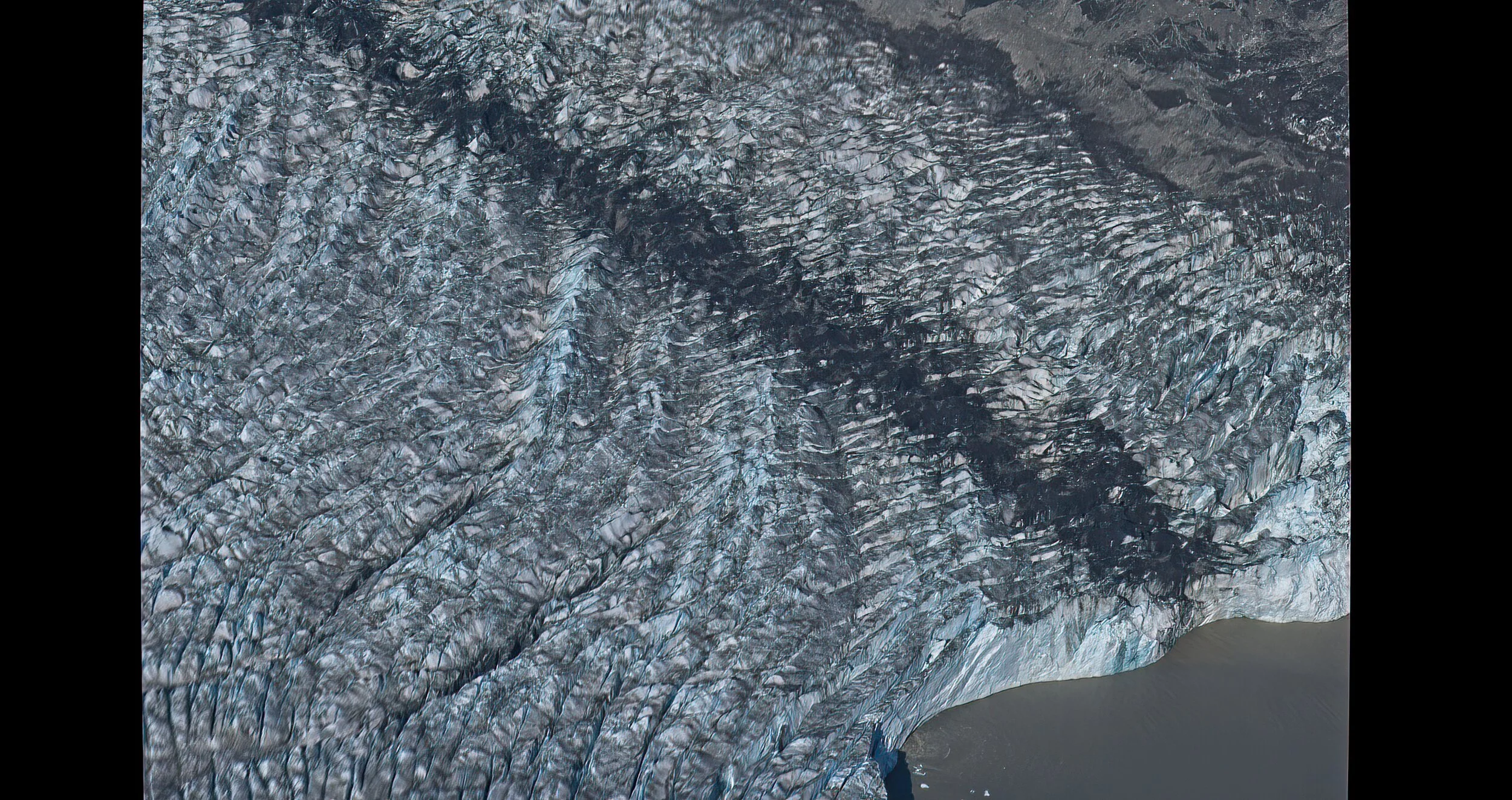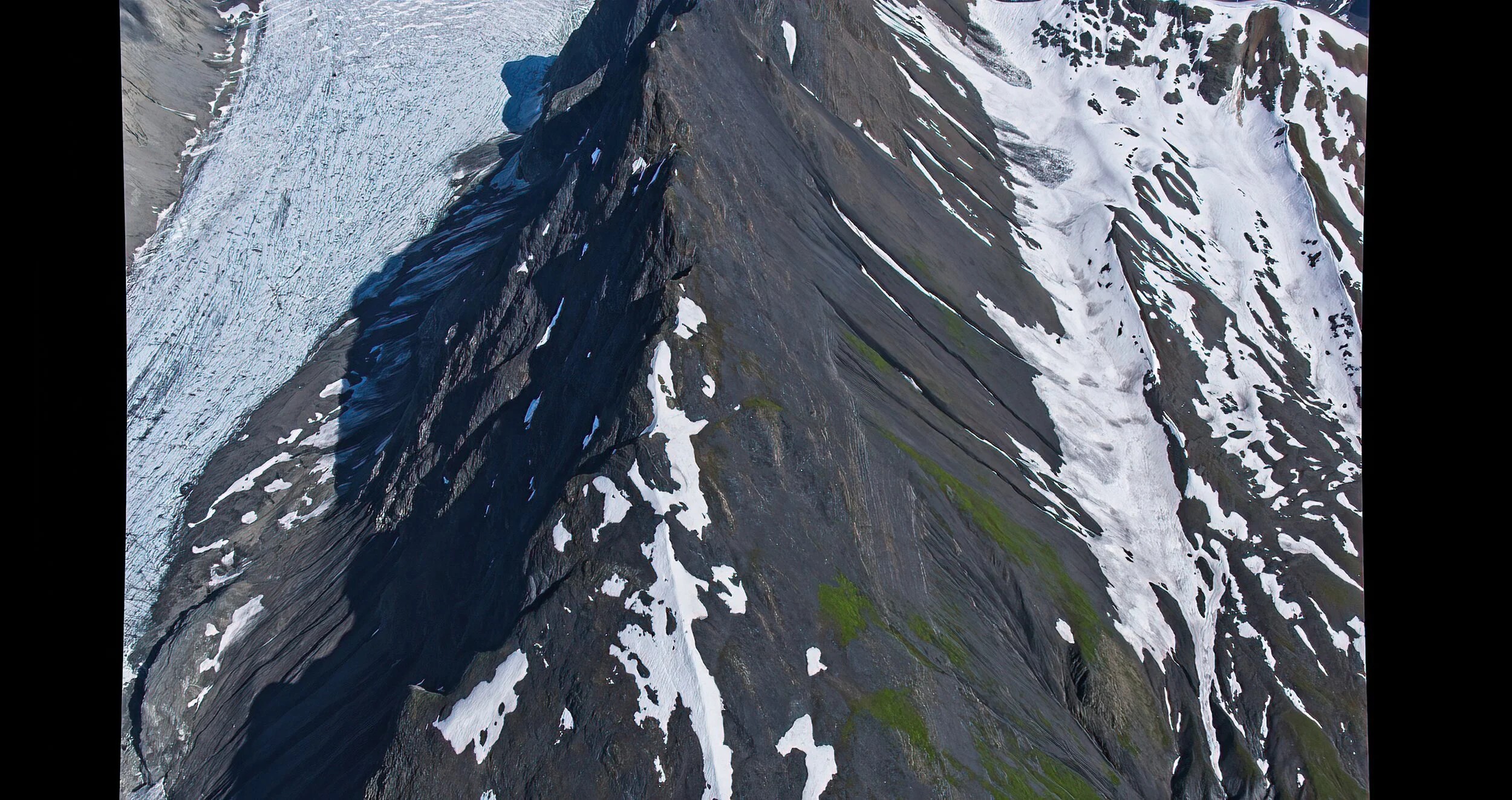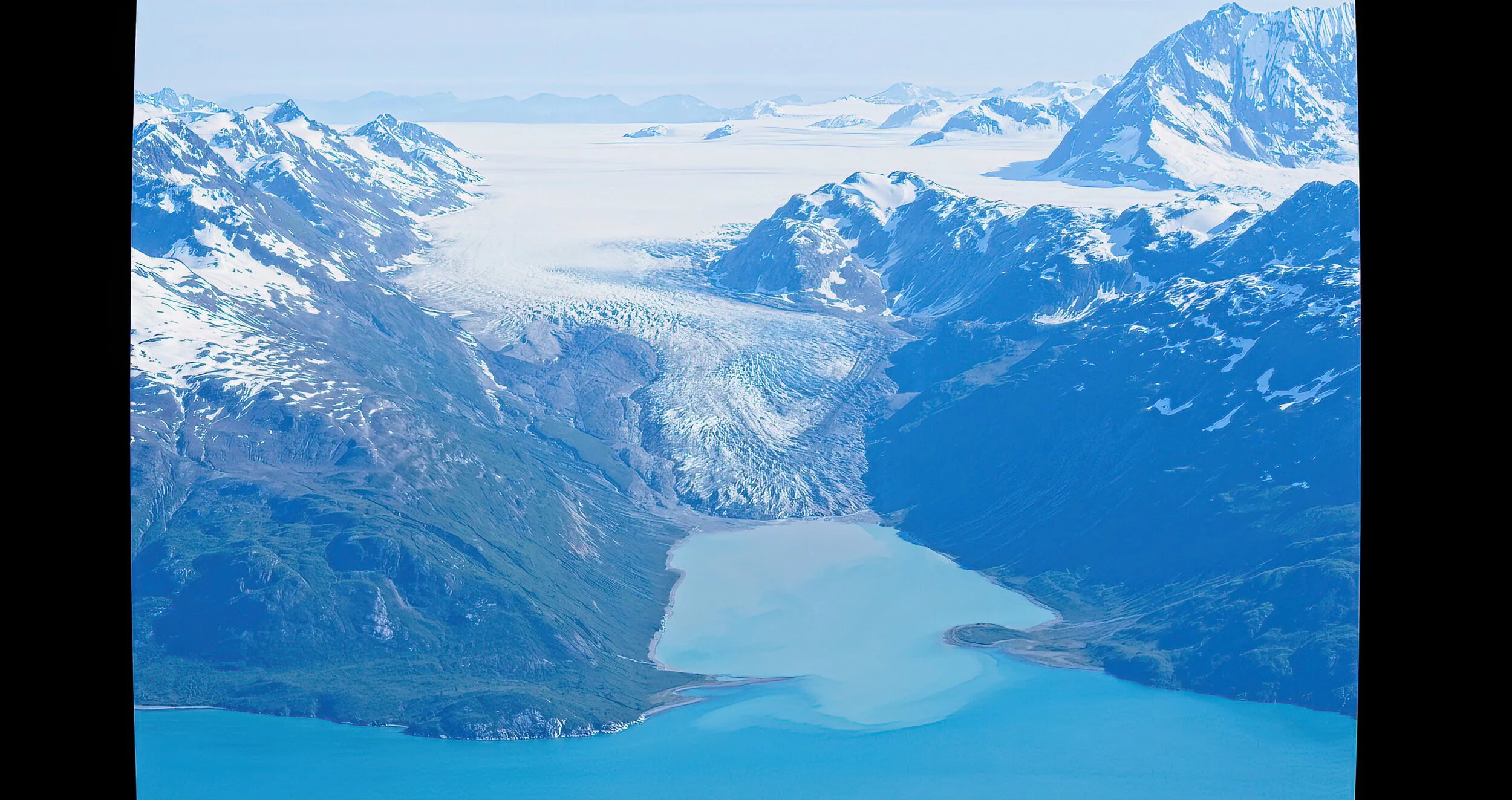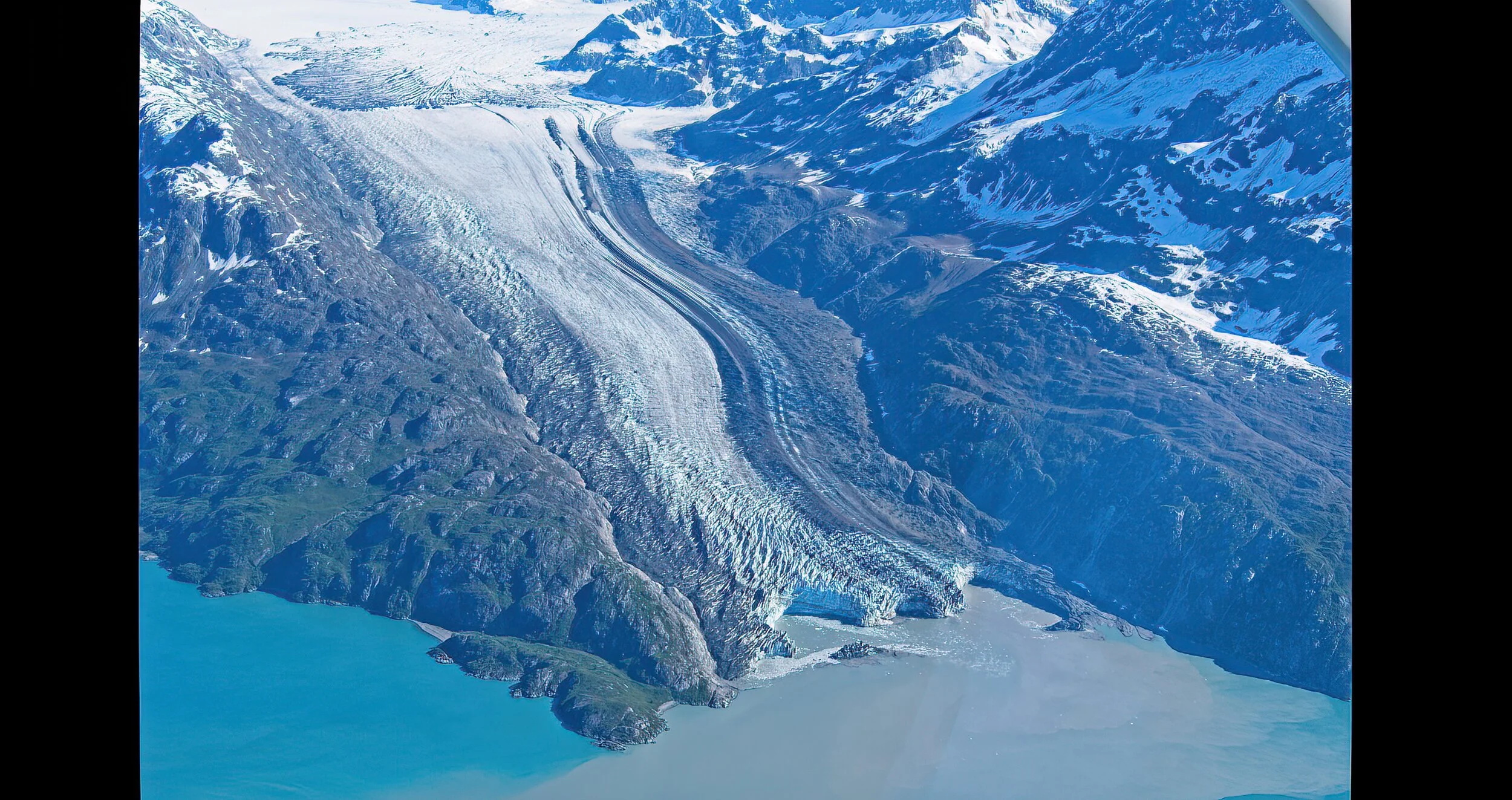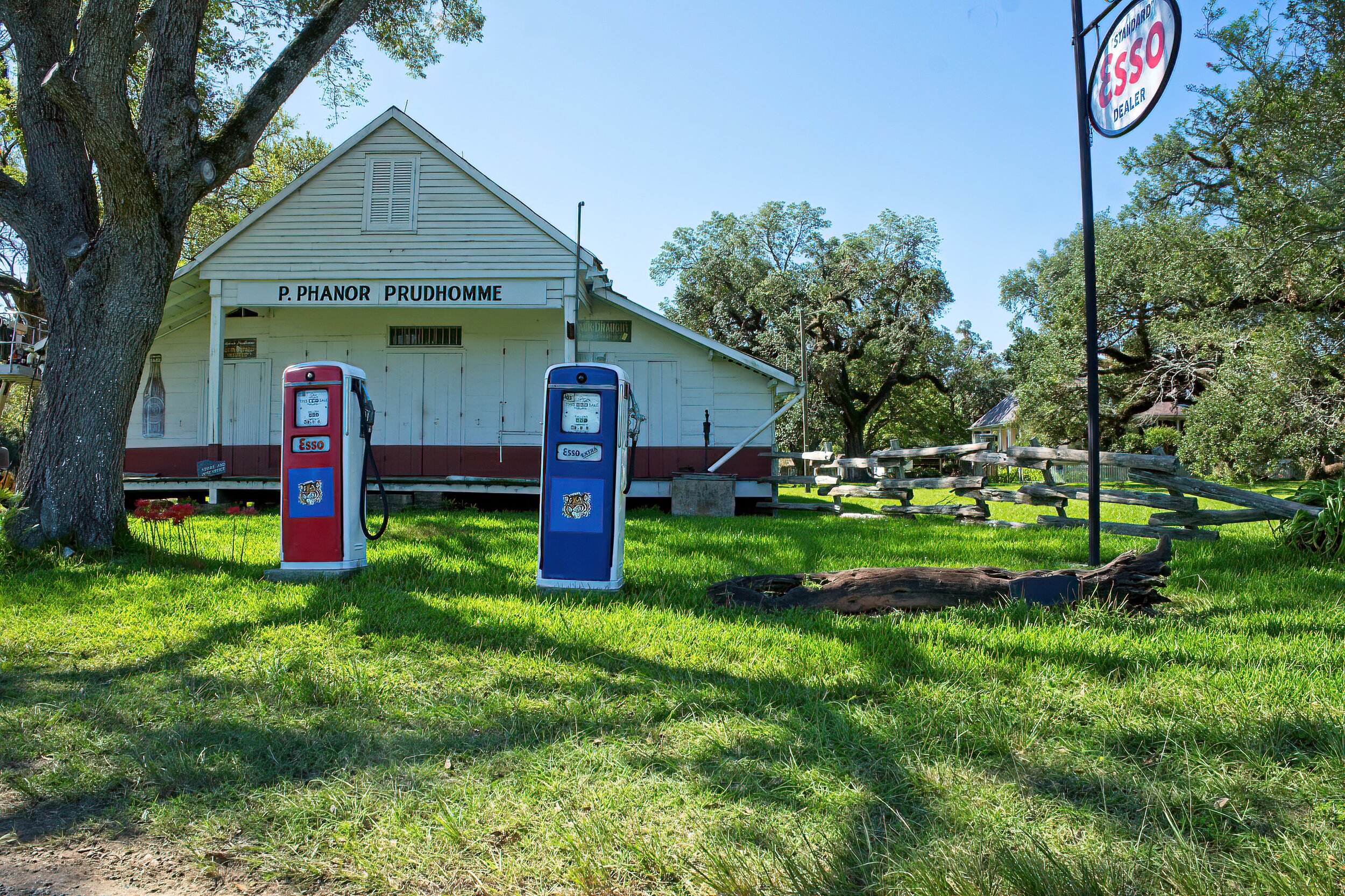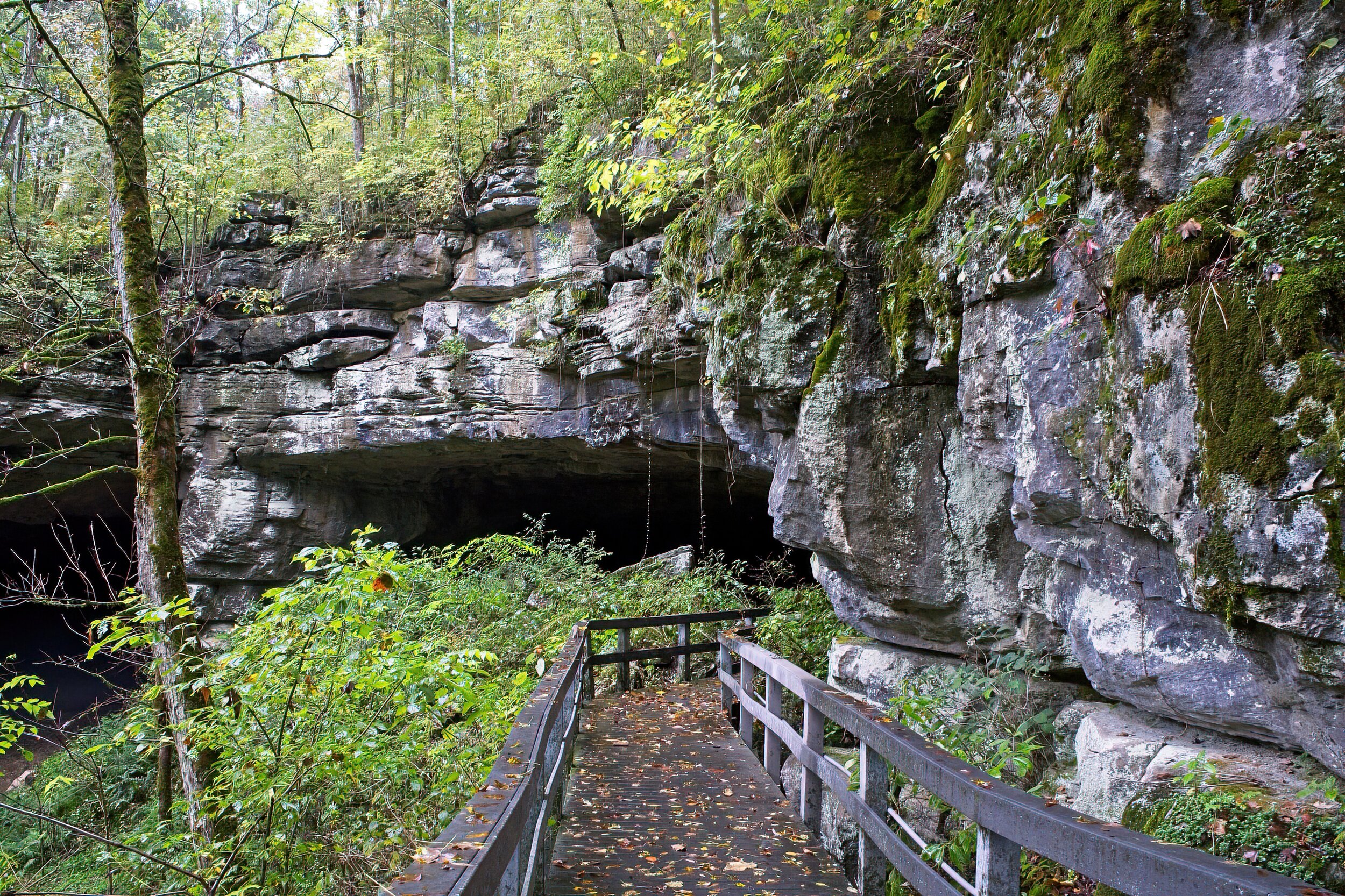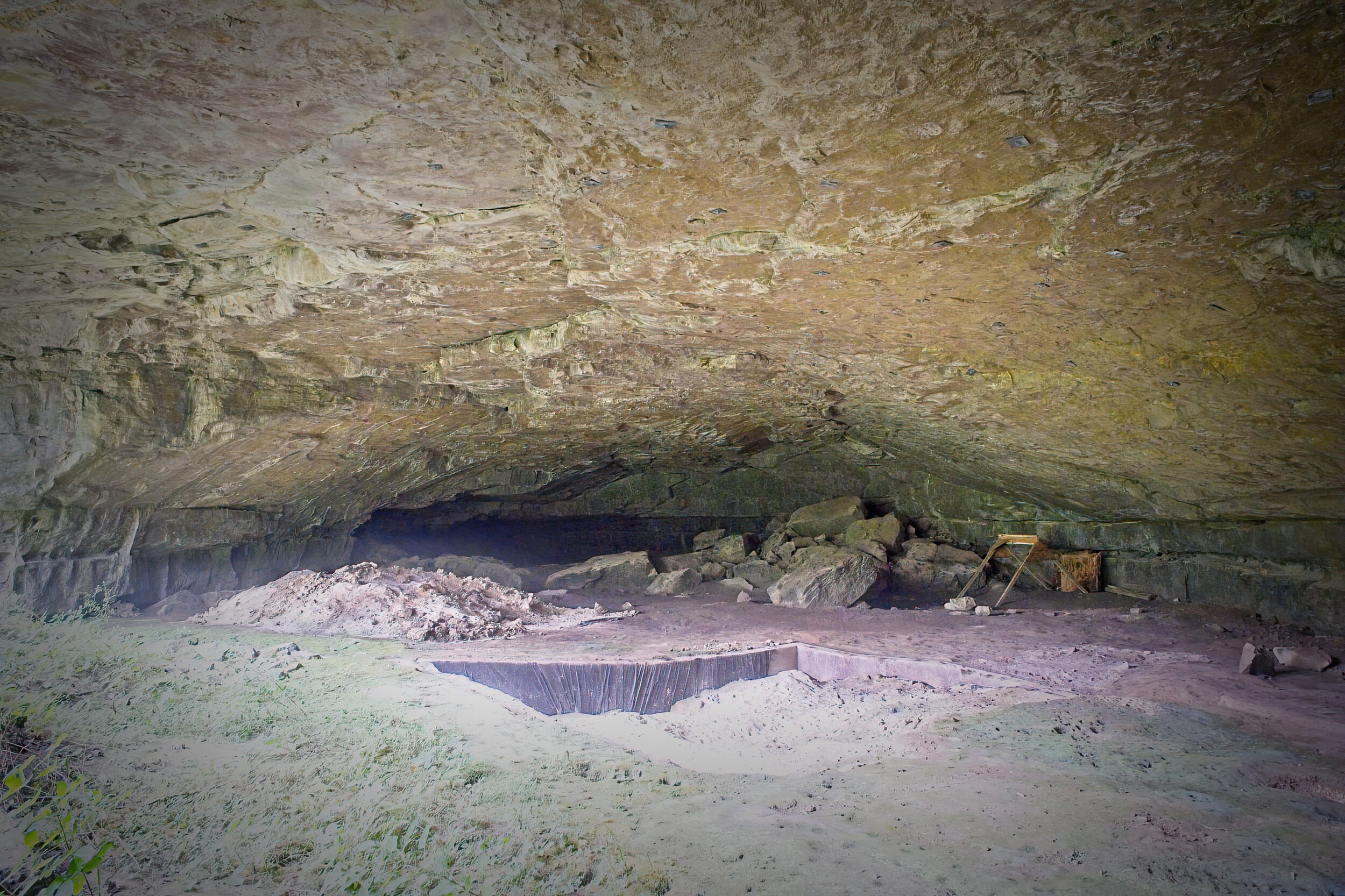Walnut Canyon was different than other native dwellings we have visited. The route to the dwellings and their position in the canyon were unique. The informative Visitor Center is on the edge of the steep canyon. A cold, windy morning in April, about 30 degrees when we left our lodgings, caused us to reach for our warmer hats and jackets before we launched down the 200 or so steps into the canyon. Steps are steep with several viewpoints for looking into the canyon. At the primary trail, the Island Loop Trail, you cross over a small connection from the main canyon wall to a section of rock that rises from the canyon floor. There is a narrow paved path that circles this rock peninsula. The rock above stretches out over the walls, and in these niches are the remains of the rock-walled dwellings from about 900 years ago with rock paths in between. The larger homes were on the edge of the peninsula but also visible were homes on both sides and across a smaller side canyon. While they seemed close together, it was a 600-800 foot walk down and up for afternoon tea with neighbors.
The area is named Sinagua, from the old Spanish name for the region, “mountains without water.” Water had to be carried up each day, and socializing was done at the Walnut River. They grew squash, corn and beans on ledges around the dwellings. There were walnut trees which were important to the culture. The position of the dwellings was easily defended but they would have been vulnerable if prevented from getting water from the river below.
Walnut Canyon was a short, simple drive from our B&B in Flagstaff.
Cadillac’s Viewpoint: The Driver and the Kind Person started down the stairs while I was looking for the elevator. I don’t do that many stairs. Without one in sight, I spent an hour on the porch with the excellent ranger, and we discussed hats. Cadillac’s Elevation 4 Antlers
Starting on the Island Path
I bring along a red clad arm to point out things like the dwellings on the other side of the canyon
Yes, it was narrow in places
That white speck, the Visitor Center
How you get back to the VC
A peak at the river, where you went everyday for water

